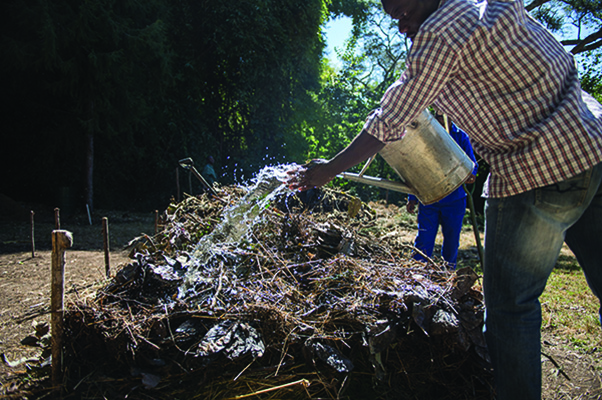
Ministry Updates
Forecast: Famine
January 29, 2015
by Mark Watson

We asked Lowell Bliss to share about the importance of environmental missions. This opinion column appears in the winter 2014 issue of Horizons magazine.
In July 2010, missions leaders and environmental experts met in Manhattan, Kansas, for the first Environmental Missions Consultation. A TEAM missionary from the Arab Peninsula attended. Among the work accomplished, a definition was constructed: “Environmental missionaries are those sent cross-culturally to labor with Christ — the Creator, Sustainer and Redeemer of all creation — in caring for the environment and making disciples among all peoples.” Though the event felt inaugural, it’s common knowledge missionaries have been serving through reforestation, sustainable agriculture, waste management, drinking water development and other activities. The stories chronicled in this issue alone prove that environmental missions is nothing new.
William Carey, who sailed to Calcutta in 1792, is often called the Father of Modern Missions. History knows him as a preacher, a Bible translator, an educator and a social reformer. Carey was also a world-class botanist. Three species of tropical plants are named for him. He helped form the Indian Agricultural and Horticultural Society, an organization still serving India today. Even so, when I explain about the spirit behind environmental missions, I look beyond Carey as a possible “first” to someone in the very pages of Scripture itself: Agabus.
You won’t find reference in Scripture to solar panels, carbon emissions or toxic waste mitigation, but Agabus is a prophet mentioned twice in the New Testament, most famously in Acts 21 when he bound himself with Paul’s belt and prophesied the apostle’s imprisonment. The first mention of Agabus — and arguably the more theologically significant incident — is found in Acts:
During this time some prophets traveled from Jerusalem to Antioch. One of them named Agabus stood up in one of the meetings and predicted by the Spirit that a great famine was coming upon the entire Roman world. (This was fulfilled during the reign of Claudius.) So the believers in Antioch decided to send relief to the brothers and sisters in Judea, everyone giving as much as they could. This they did, entrusting their gifts to Barnabas and Saul to take to the elders of the church in Jerusalem. Acts 11:27-30 (NLT)
This incident provides the backdrop for Paul’s collection for the poor in Jerusalem and for his teaching in 2 Corinthians 8 and 9 and 1 Corinthians 16. In other words, it is foundational to how the church understands giving and generosity. God used Agabus to help mobilize the church around taking care of the poor in the face of famine.
It is not unreasonable to say that some of God’s predictive work has been transferred over past centuries to scientists. As one fulfillment of the creation mandate to bless and flourish, rule and subdue, till and keep (Genesis 1:28; 2:15), God uses scientists to alert us to ecological trends and the likelihood of certain natural phenomena. In my presentations I use charts prepared by the world’s leading atmospheric scientists. Already on the map, between the years 2000-2009, the portions of the globe under the official designation “severe drought” have gotten wider and redder. But then the drought projections for 2030, 2060 and 2090 grow so intense that new colors — fuchsia and purple — have to be added. Praise God for a new generation of Agabuses that has emerged and the movement to care for the poor.

